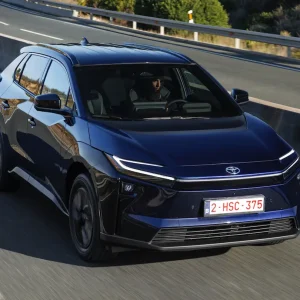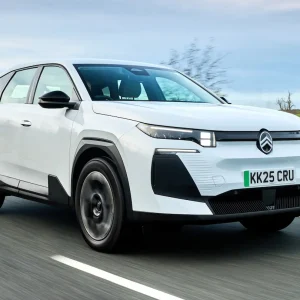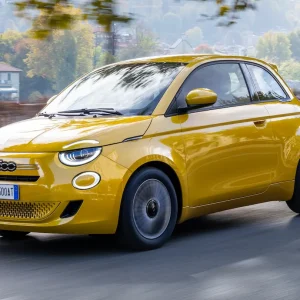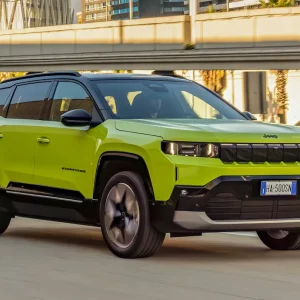The current, second-generation Volvo XC60 has been a favourite of ours and fleet since its launch in 2017. The design has aged well, but after four-years at the end of 2021, the XC60 range debuted a mild mid-life facelift. To demonstrate just how strong the second-generation design was, the only obvious changes to the exterior styling was a new front grille and bumpers.
As we said at the time in our review, the most notable upgrade for fleets, a bigger battery for the plug-in XC60 models, was then and is still to arrive – thanks to the chip shortage. In the meantime, we thought we’d look at the facelifted mild hybrid petrol B5 in the now-discontinued Inscription equipment grade with all-wheel drive.
Rather than a plug-in hybrid, the B5 is a mild hybrid XC60, which is basically a 48V starter/generator, that harvests electricity that would otherwise be lost when braking and then it feeds that accumulated power back by giving a boost when accelerating.This means the engine does not have to work as hard saving petrol.
Unlike the plug-in version, this means if you buy the B5 thinking you can go any distance on electric power alone, you’re going to be disappointed as it drives just like a normal XC60 with the engine on all the time. In fact, the eight-speed automatic transmission works so seamlessly with the hybrid tech, it’s hard to know when it’s working. The only obvious difference to other XC60s we’ve driven in the past is that it’s perhaps keener to rifle through its eight gears – even if it’s not accelerating particularly fast.
To show how little mild hybrid tech effects the CO2, in core equipment grade the B5 has a relatively high official CO2 figure of 187g/km, meaning it falls into the highest 37% BIK rate. In comparison, the outgoing PHEV has an official CO2 figure of 55g/km in old R-Design spec, equalling a 15% BIK rate.
Still, mild hybrid or not, with 250hp and 350Nm and 0-60mph acceleration in less than seven-seconds, it certainly doesn’t sound slow on paper – although we found the throttle of our test car sometimes hard to modulate and the performance best described as ‘relaxed’.
Generally, it provides a composed, refined drive. Although our XC60 was fitted with optional 20in wheels, which gave a hard edge to the ride and was particularly unsettled by broken tarmac on cross-country roads. Inside, the interior, like the exterior, is pretty much unchanged – think quality finishes and upholstery. In fact the most significant change is the introduction of the Google-based infotainment system, that was first seen in the Polestar 2. We particularly like the Google Maps-based navigation, along with Google Assistant voice control, which actually works very well picking up sat-nav destinations, and even cabin temperature changes. The downsides are, the system does feature small menu icons, which can be tricky to press on the touchscreen when driving along. The facelifted XC60 also gets a graphically-updated 12.3in driver display, which is an attractive feature, although it does make the central screen redundant, as it shows the same
navigation details.
As I mentioned at the start, since we drove this XC60, Volvo has rationalised the range with Core, Plus and Ultimate being the new equipment grades. Volvo tell us that the Plus is the closest to the Inscription, which was already one of the better-equipped models in the range. Although, we’re told the Plus does get extra kit.
Overall, the changes we’ve tried so far only add to the XC60’s status as a strong contender in this segment – and once the bigger battery PHEV versions arrive, they’ll demand strong fleet consideration.
Volvo XC60 B5 AWD Plus
P11D: £51,695
Residual value: 41.45%
Depreciation: £30,268
Fuel: £12,401
Service, maintenance and repair: £2,945
Cost per mile: 57.69p
Fuel consumption: 35.7mpg
CO2 (BIK %): 181g/km (37%)
BIK 20/40% a month: £318/£637
Luggage capacity: 505 litres
Engine size/power: 1,969cc/253hp plus 48V starter/generator





